Report Card: Natsu Basho - Part 3 Ichiyamamoto, Hokutofuji, Sadanoumi, Kinbozan and Shonannoumi
Continuing to grade the runners and riders from the summer tournament.
Want some more grades? Today I’ve got report cards for five guys who did pretty well at the 2024 natsu basho. Check below for my write-ups on Ichiyamamoto, Hokutofuji, Sadanoumi, Kinbozan and Shonannoumi.
Ichiyamamoto
Rank: Maegashira 12 East
Record: 8-7
Grade: C
Ichiyamamoto put in a solid performance in May to earn his second kachi-koshi since returning to the makuuchi in November. His prior records, since a short stint in juryo (where he won a yusho), are 11-4, 5-10 and 7-8.
He scored some solid wins in this basho, getting the better of Sadanoumi, Shonannoumi, Ryuden and Tamawashi. The win over Tamawashi (below) came on the final day.
This is a great bout to look at, since both men were fighting their hardest to try to bank a winning record. In this bout Ichiyamamoto showed a lot of strength and toughness. I feel like these are areas he’s been working on. During his previous stint in makuuchi he was really lacking there. But in this tournament he drove forwards with committment and didn’t blench under pressure.
Previously, Ichiyamamoto’s thrusts were more of the pitter-patter variety, but you can see against Tamawashi that he was putting his head down and really trying to force his opponent backwards (instead of just trying to pester them). His side step at the end of this bout showed off his mobility, too. That has always been one of his plus attributes.
Ichiyamamoto’s win over Sadanoumi, on Day 2, also displayed a lot of toughness. And you’ve got to be tough to get anything against Sadanoumi. Again, see how Ichiyamamoto was really committing to these drives forwards. It works for him here, but sometimes he was caught out by putting his head down like that. Doing so gives his opponents a very enticing target for potential slap downs.
Ichiyamamoto is still prone to doing a little too much when he finds himself in some space. In his bout with Tokihayate he ended up sprawling on the ground because his hand movement had drifted too far into flailing, instead of the controlled thrusts we saw in the above examples.
All in all, though, this was a good tournament for Ichiyamamoto. And it’s nice to see him do well, being that he’s one of the more entertaining characters in the sport.
Hokutofuji
Rank: Maegashira 11 West
Record: 7-8
Grade: C-
It’s almost been a year since Hokutofuji broke out at the 2023 Nagoya basho and came up just short of a yusho, losing to Hoshoryu in a play-off. It’s been tough for him since then. He’s had losing records in all but one of the basho that followed. In many of those tournaments it looked like he was fighting hurt. Even so, at this point, it sadly seems like that Nagoya performance is something Hokutofuji may not be capable of repeating.
Whether that’s the effect of nagging injuries or just that Nagoya was a fluke, I don’t know. But that Nagoya tournament was one of my favourites in recent memory because of Hokutofuji’s performance and the intensity he brought to every second he spent on the dohyo.
That intensity seemed to ebb away when Hokutofuji looked most hurt over the last twelve months. But thankfully it seems to be back. However, intensity alone hasn’t gotten him back on the winning track.
Though his right knee and calf were bandaged this tournament, Hokutofuji looked good off the tachiai and was able to drive his foes back with power. See below how he deployed the nodowa throat thrusting technique on both Ichiyamamoto and Mitoryu. He used that throat thrust in combination with a push to the chest. The throat thrust served to put the opponents off balance (and deter them from their own attacks), while the chest thrust was all about moving them backwards.
Unfortunately for Hokutofuji, this technique didn’t always pan out. When he put his hand into Shonannoumi’s throat, Shonannoumi responded with a great side step. In this bout, Hokutofuji really struggled when he found himself in open space. He looked a little desperate trying to get back into close quarters and, as a result, was easy to control and put down.
Against Takanosho (below), he found someone who wanted to do the same thing as him. This resulted in a battle of strength and Takanosho got the better of him this day. Hokutofuji tried to use his mobility to slip passed Takanosho, but he timed it poorly and Takanosho had far too much space to reposition himself and then score the fight winning thrust out.
Given what we’ve seen from Hokutofuji so far this year, a 7-8 is a decent result for him. I just want more.
Sadanoumi
Rank: Maegashira 11 East
Record: 9-6
Grade: B-
Sadanoumi is now the sole owner of the title of best gatekeeper in the makuuchi. Previously I listed him as one of The Three Gatekeepers with Takarafuji and Myogiryu. But while those others have fallen, he has remained a perfect measuring stick for the division. If you can get past him, the upper maegashira rankings await.
At 36-years-old Sadanoumi is still strong, quick and ornery enough to make him a hard out for every opponent he faces. His 9-6 record in May gave him his fourth kachi-koshi in the past five tournaments. This tournament also saw him notch his 706th win. That gives him the third highest total wins among active rikishi (behind Takayasu with 733 and Tamawashi with 860). The record for most wins belongs to Hakuho, who had 1187 wins.
Sadanoumi has gotten many of those 700 wins with his migi yotsu grip (right underhook, left overhook). Below are three examples of him using this technique on route to three very different looking victories.
The first is his bout with Shodai.
Here he was able to get his right underhook very quickly. Shodai defended against the left overhook, but that just allowed Sadanoumi to establish double underhooks. You can see that as soon as Sadanoumi was able to get his grip on the right side he did a little duck move with his head to get his chest flat on Shodai’s and his head on centre. From that position Shodai was stuck upright and unable to defend against the rush.
Against Nishikigi (above) Sadanoumi also immediately established the migi yotsu. Nishikigi matched the grip and stuck close to Sadanoumi, preventing him from putting his head in the middle of his chest (like he did to Shodai). In response to this Sadanoumi used some incredible strength to elevate Nishikigi off his feet and then push him back to the straw. On the boundary Sadanoumi showed off his strength again in blocking Nishikigi’s attempt to turn him before getting the force out.
Against Hokutofuji (above) Sadanoumi struggled to get his favourite grip off the tachiai. That’s thanks to Hokutofuji employing the nodowa, which we looked at earlier. Sadanoumi responded to the first nodowa by pushing away Hokutofuji’s hand. In doing so he stumbled forwards. Hokutofuji then went for the nodowa again and tried to thrust Sadanoumi’s chest with his free hand. However, Sadanoumi blocked that free hand and locked in his migi yotsu. Once he had that grip established, he was able to step to the side and use his left underhook to usher Hokutofuji past him and out. Great stuff.
Kinbozan
Rank: Maegashira 10 West
Record: 8-7
Grade: C
This was another decent, albeit under-the-radar, tournament for Kinbozan. Since he came up to makuuchi last year he’s gotten kachi-koshi four out of eight basho. His debut basho was his best. He scored 11-4 and earned an Outstanding Performance prize. Since then he’s been tip-toeing around 8-7.
After the last tournament I said I wanted to see Kinbozan do better when surging forwards and match the effectiveness he has when being pushed backwards. I saw some improvements there in this tournament.
Going forwards Kinbozan was able to squat down well and really wrap up his opponents, a little like Asanoyama.
You can see below how effective he was at pushing Hokutofuji backwards. I think Hokutofuji may have been going for a henka/hatakikomi off the tachiai here (hence why he didn’t lead with that nodowa). Kinbozan’s ability to get his arms around Hokutofuji so quickly and use his great foot speed to close distance took that kind of win off the table for Hokutofuji, though.
Kinbozan’s wide stance and bent knees helped him a lot against Midorifuji, too. See below how he was able to stay upright while thrusting Midorifuji away and drawing his arms back to avoid the katasukashi and hikiotoshi attacks that make Midorifuji so dangerous. He showed that foot speed again in this bout. Midorifuji was able to pull Kinbozan forwards and move to his side, but before he could get a glimpse of his back Kinbozan was able to pivot and get square before rushing forwards for the win.
Meisei was able to pull Kinbozan through empty space much like Midorifuji did. However, Meisei was better able to capitalize on the position. Instead of pulling away from Kinbozan, like Midorifuji did, Meisei put his head down and shoved against his stomach for the oshidashi win.
Kinbozan dropped to 0-3 versus Meisei with that bout. He has struggled with wrestlers like Meisei and Kotoshoho (who he is also 0-3 against); guys who are strong, mobile and like to create chaos on the dohyo. Kinbozan is like Oho in that he can look very deliberate and sometimes slow with his hands when forced to fight at range. Maybe his next homework assignment should be to bring his hand speed up to the level of his foot speed.
Shonannoumi
Rank: Maegashira 10 East
Record: 9-6
Grade: B
This was a very interesting tournament for Shonannoumi. On Day 12 he was 9-2 and in the leading pack of the basho. That group included eventual winner Onosato and perennial challengers Kotozakura and Hoshoryu. However, from Day 12 onwards he was fed a steady diet of tough opponents and that resulted in a four day losing streak that dropped his record to 9-6. That’s still good, but it’s a bit of a wasted opportunity for the man making his sixth makuuchi tournament.
He had a similar experience in the last tournament, getting off to a 7-2 start before dropping to another 9-6 record. I think this tells us that, at this stage of his career, Shonannoumi does not have that killer mentality that we’ve seen from the likes of Onosato and Takerufuji. Those two were able to deliver once the pressure kicked in and the level of opposition increased. Shonannoumi has not.
Shonannoumi is a rather puzzling wrestler to figure out. And I can’t decide whether or not I like his style. The ease at which he executes some finishes, as if he’s throwing an old lamp on the curb for collection, is both funny and a little maddening. See below how he handles Tamawashi and then Takarafuji. He looked so casual in these matches and was able to score these wins without engaging the lower half of his body. He’s able to simply shrug other guys to the ground, before waddling off in victory.
This style of fighting, where he seems to draw power from his belly (not from his knees) works against wrestlers who aren’t as big or as strong as him. A class of wrestler it does not work well against are the angry boys you find at the top of the division, wrestlers who come at their opponents with ferocity and pressure them into mistakes.
Look how Abi totally overwhelms Shonannoumi below. Shonannumi reacts a lot to Abi’s palm strikes and looks unable to focus or fight back to any great effect. Abi, who is 3-0 against Shonannoumi, preys on wrestlers like this, who he can intimidate, bully and blitz out of the ring.
Meisei is a similar class to Abi, though less malicious. His activity and pressure fighting also completely took Shonannoumi out of his comfort zone.
Here’s his Day 14 loss to Onosato, who refused to give him any space or time to operate.
I hope don’t come off as too hard on Shonannoumi here. Ultimately, he’s a wrestler I enjoy having in the top division. He’s got a different/funky style and presents a problem for those ranked around him. As far as whether he can challenge for a cup, though... that’s not going to happen unless he can do better under pressure and also show some sort of mean streak.
Thanks for reading. I hope these shorter report cards are hitting the mark for you. I certainly prefer writing them this way and getting them out sooner.
Next week, at the latest, I’ll be back with grades for Shodai, Tamawashi, Takanosho, Kotoshoho, Mitakeumi and Nishikigi.
Cheers!



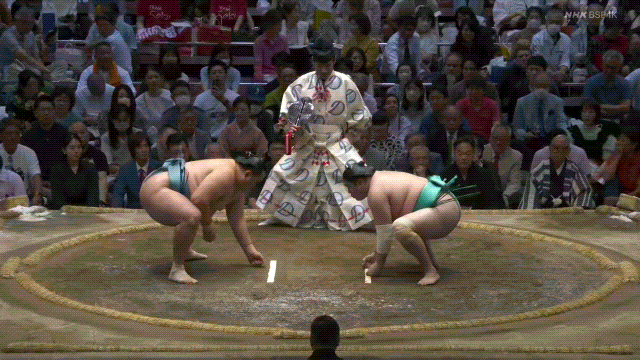
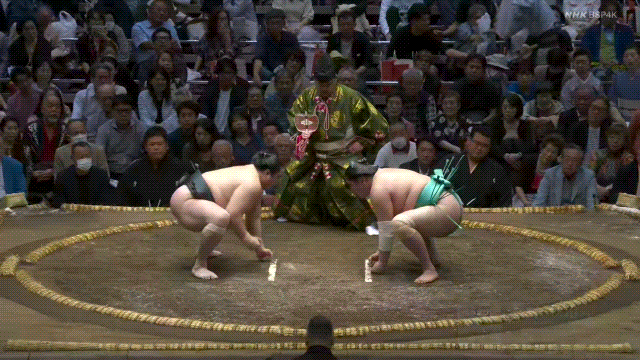
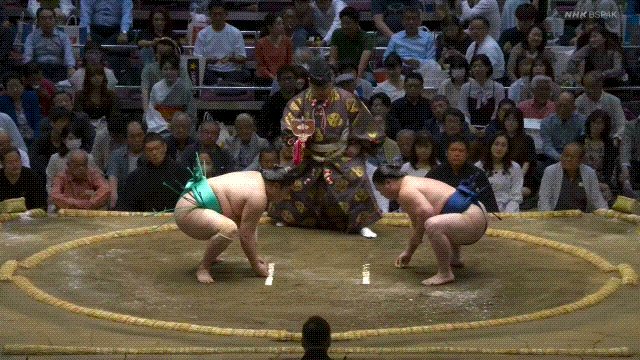
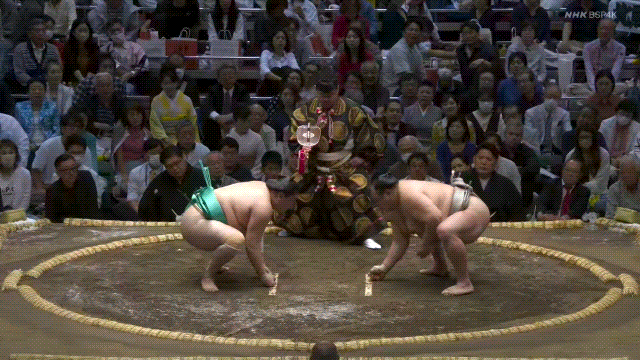
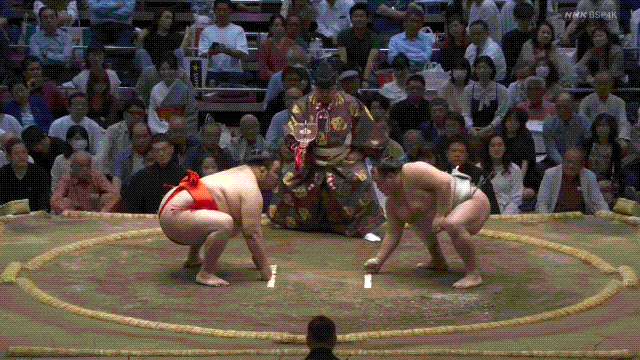
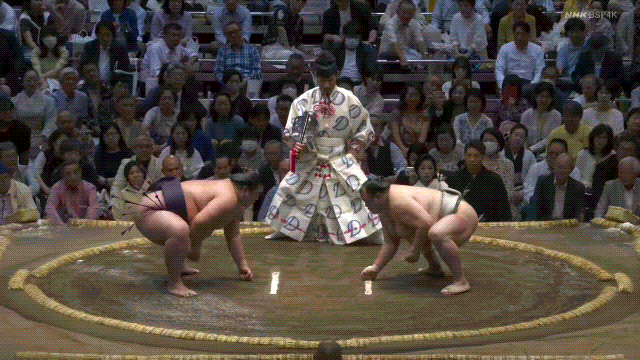
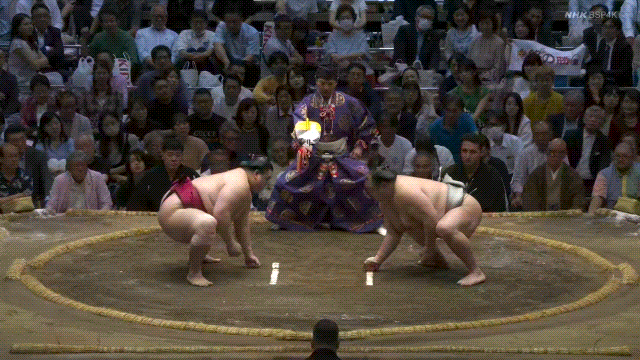
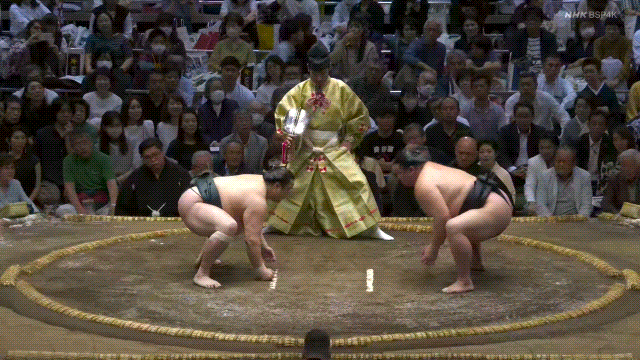


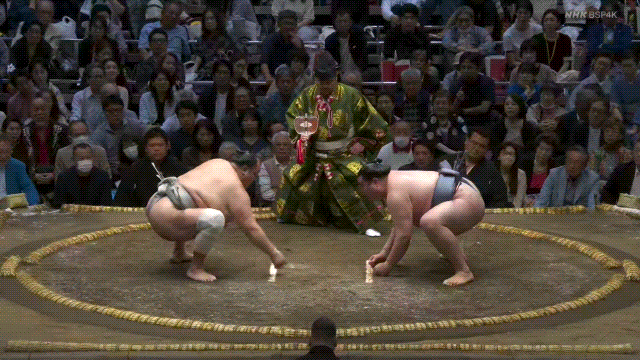


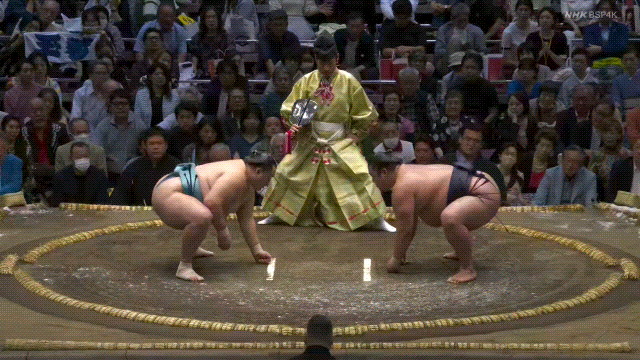
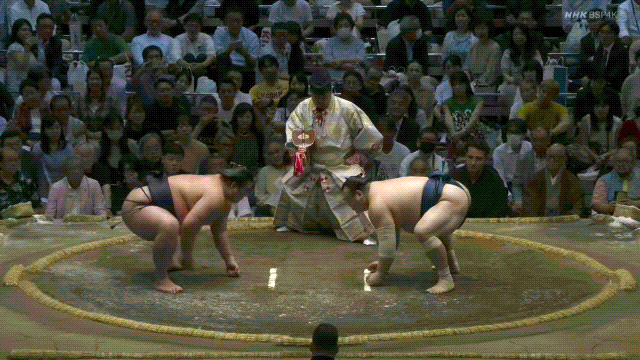
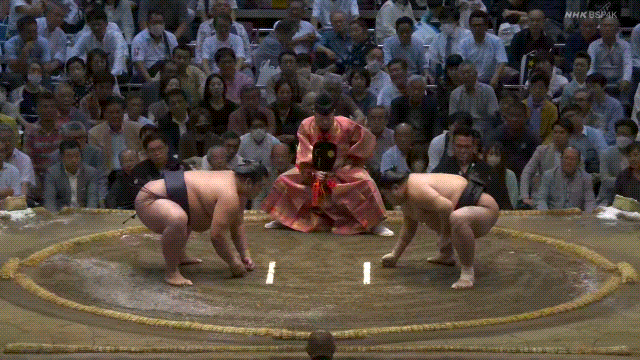
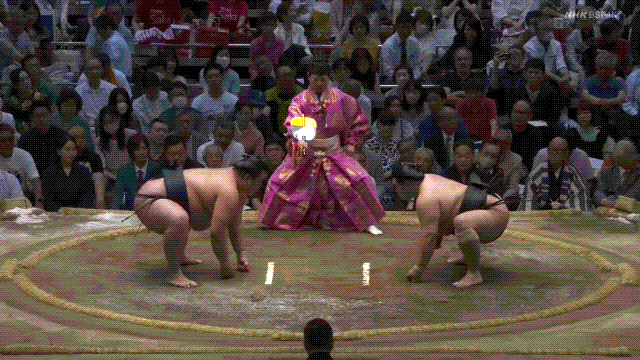
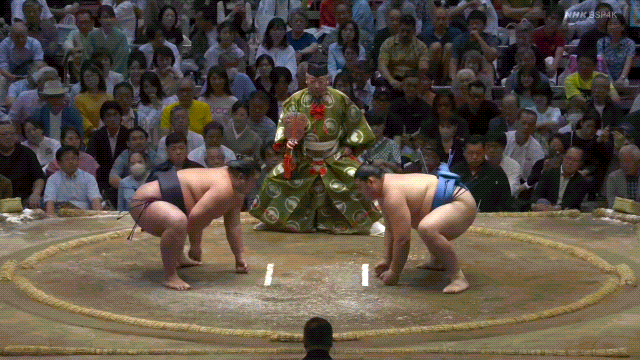
I especially liked your characterization of Sadanoumi as the "gatekeeper." As a fan, but not an analyst of your skill, I can recognize there's some dividing line between the top fighters and the lower, but it's not always evident where it is (especially as it moves from tournament to tournament). I admit the lower rankers tend to blur together for me as they come and go. Now I can look at Sadanoumi with new respect and understanding.
Really looking forward to your analyses between now and the next tournament as you get to the top guys. I'll be going back to review them all again as we get closer. This substack of yours is the best investment a sumo fan can make.
I definitely like the shorter/more often format. Feels like there's more detail in the analysis.
As a hairline-challenged guy myself, I'm always rooting for Hokutofuji!